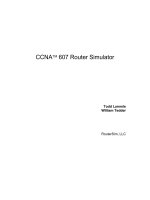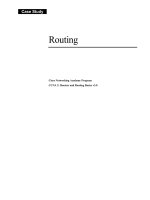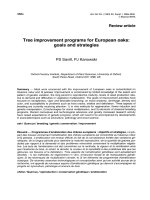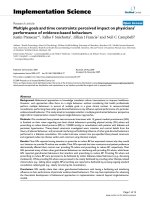esp goals and objectives
Bạn đang xem bản rút gọn của tài liệu. Xem và tải ngay bản đầy đủ của tài liệu tại đây (1.11 MB, 36 trang )
ELT Planning
Formulating
Goals and Objectives
Goals and Objectives
How can you design a
course if you don’t know
where you want your
students to come out?
Goals
Provide guidelines and should be flexible
enough to change, if they are not.
Two bigger obstacle when formulating Goals
Lack of time
Teachers don’t know
how to formulate them
Key assumptions about GOALS characterizing
the curriculum approach to educational planning
People are generally motivated to pursue
specific goals.
The use of goals in teaching improve the
effectiveness of teaching and learning.
A program will be effective to the extent that it
goals are sound and clearly described.
Some thoughts about goals and objectives
The nature of aims and objectives, however, is not necessarily
straightforward because they refer to knowledge, skills, and
values that educational planners believe learners need to
develop. (Richards 2001:112)
In developing goals for educational programs, curriculum
planners draw on their understanding both of the present and
long-term needs of learners and of society as well as
planners’ beliefs and ideologies about schools, learners, and
teachers. (Richards 2001:113)
In curriculum discussion:
Goal and Aim used interchangeably,
referring to a description of the general
purposes of a curriculum.
Objective refers to a more specific and
concrete description of purposes.
Goals
…are a way of putting into words the main
purposes and intended outcomes of your
course.
The Journey analogy.
The destination The Goal
the journey the course
Objectives are the different points you pass
through on the journey to the destination.
Goals
Goal
Objective
Objective
Objective
Goals…
Can help you stay on course, both as you
design the course and as you teach it.
Help to bring into focus your visions and
priorities for the course.
State an aim that the course will explicitly
address in some way (ESP).
Are future oriented.
Are what the students should be able to do
when they leave the program.
Are the benchmarks of success for a course.
The purpose of Goal/Aim statements are:
To provide a clear definition of the
purposes of a program.
To provide guidelines for teachers,
learners, and materials writers.
To help provide a focus for instructions.
To describe important and realizable
changes in learning.
Making choices about goals
Goal
Goal
Goal
Goal
Goal
Goal
Goal
Goal
What is achievable?
What is appropriate?
Goal 1
Goal 2
Goal 3
The KASA framework
Skills goals => what Ss can do
with the language.
Attitude goals => those that
address affective and valuesbased dimension of learning: Ss
´ feelings toward themselves,
others and the language.
Formulating Goals
The KASA framework
Knowledge goals what Ss
will know and understand.
Awareness goals what Ss
need to be aware of when
learning a language.
Formulating Goals
Awareness
By the end of the course, students will
have become more aware of their
reading comprehension in general and
be able to identify the specific reading
techniques in which improvement is
needed.
Formulating Goals
Knowledge
By the end of the course students will be able
to understand the elements of a good reading
process.
Skills
By the end of the course students will be able
to use reading strategies appropriately when
reading scientific and technical texts.
Some examples:
A Business English Course
To develop basic communication skills for
use in business contexts.
To learn how to participate in casual
conversation with other employees in a
workplace.
to learn how to write effective business
letters.
More examples:
A Course for Hotel Employees
To develop the communication skills
needed to answer the telephone calls in
a hotel.
To deal with guest inquiries and
complaints.
To explain and clarify charges on a
guest’s bill.
Aims statements are generally derived from
info gathered during needs analysis.
The following areas of difficulty were some of those
identified for non-English-background students studying in
English medium universities:
Understanding lectures
Participating in seminars
Taking notes during lectures
Reading at adequate speed to be able to complete reading
assignments
Presenting ideas and information in an organized way in a
written assignment.
More examples of Program Goals
An ESP program for Diplomacy
This program is intended to
enable students of diplomacy
to develop their
communicative competence
in their professional filed.
More examples of Program Goals
An ESP program for Hotel and
Tourist Management
To train students to use the
English language in the
tourism field.
More examples of Program Goals
An ESP program for
Students of Law
The program is intended to
train students of law to read
legal documents written in
English.
Some faulty aim statements:
Students will learn about business-letter
writing in English.
Students will study listening skills.
Students will practice composition skills in
English.
Students will learn English for Tourism.
Objectives
Are statements about how the goals
will be achieved.
Through objectives, a goal is broken
down into learnable and teachable
units.
Cause Effect Relationship between
goals and objectives
Objectives
Obj
Obj
Obj
Obj
Goal
Obj
If these objectives
are achieved
This goal
Will be reached
Cause/Effect relationship between goals and objectives
Objectives
Goals are more
long term
Objectives more
short term









